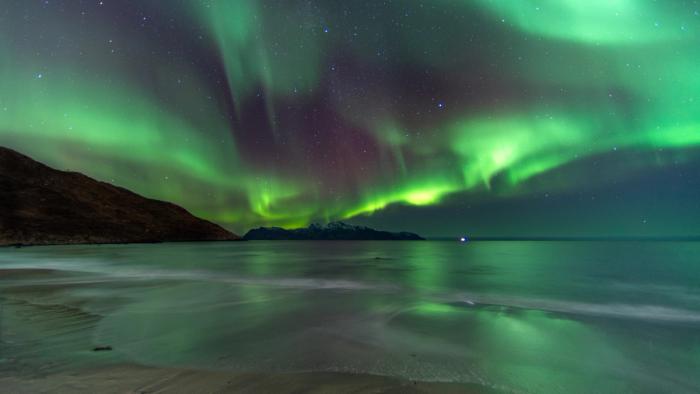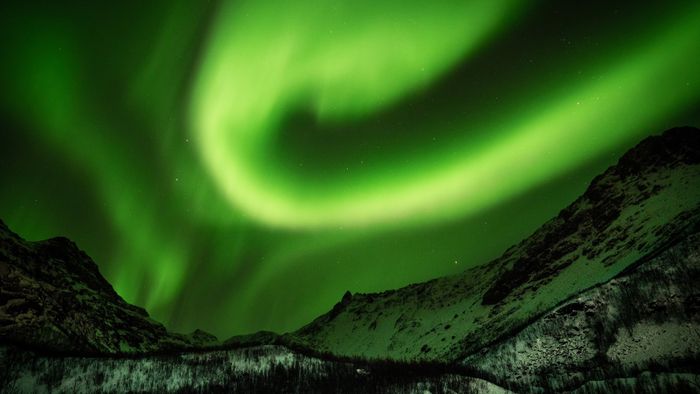
Northern lights
Alta, the “City of the Northern lights”
Northern Norway is renowned worldwide as one of the premier destinations to witness the mesmerizing Northern Lights, or Aurora Borealis. This spectacular natural phenomenon is most vividly seen in the high-latitude regions near the Arctic Circle, where Northern Norway distinguishes itself with optimal geographic and climatic conditions.
Alta, often referred to as the "City of the Northern Lights," is a standout destination for experiencing this captivating display. Located well within the Arctic Circle, Alta offers exceptionally clear and frequent sightings of the Northern Lights, thanks to its stable climate and minimal light pollution.
The town boasts a rich history with the Northern Lights, having been a pivotal location for early studies on Norther Lights during the late 19th and early 20th centuries. This legacy is honored today with the Northern Lights Cathedral and a range of aurora-focused tours and activities.

Aboat the Northern Lights
The Northern Lights are a breathtaking natural phenomenon caused by charged particles from the sun colliding with gases in Earth's atmosphere. These collisions results in the emission of light that appears to us as Norhtern Lights. The best places to view the Northern Lights are regions near Earth's magnetic poles, which include high-latitude areas like Northern Norway, Alaska, Canada, and Siberia.
Northern Lights often display vibrant colors such as green and pink, but can also appear in red, yellow, blue, and violet, depending on the specific gases involved in the collisions. These displays can manifest in various shapes, including arcs, curtains, spirals, and even coronas, influenced by Earth's magnetic field and the observer's viewing angle.
Factors influencing Northern Light Viewing
Predicting auroras involves solar observations, magnetospheric models, and ground-based measurements. Scientists use these tools to forecast when and where the Northern Lights will appear, helping aurora enthusiasts plan their expeditions to witness this spectacular natural display. The chances of seeing the Northern Lights on your expedition are high, provided the skies are clear. Our guides will keep you updated on the forecast and viewing likelihood, offering insights into the best locations for viewing and photography opportunities. More information on Northern Lights photography can be found under our photography section.
To witness the Aurora Borealis, these key factors are essential:
- Location: You must be in a region where the Northern Lights are visible, typically near the Arctic Circle, such as Northern Norway
- Darkness: The Northern Lights are best seen in dark, away from light pollution. This requires being in remote or rural areas with minimal artificial lights.
- Time of Year: The optimal time to see the Northern Lights is during winter months when nights are long and dark. In Northern Norway, prime viewing months are from late September to late March.
- Solar Activity: Solar activity influences the intensity and visibility of the Northern Lights. Space weather forecasts can aid in predicting auroral activity.
- Weather Conditions: Clear skies are crucial for Northern Lights viewing. Cloud cover can obstruct views, so checking weather forecasts and being prepared to wait for clear skies is important.
- Patience and Persistence: Seeing the Northern Lights is not guaranteed and may require multiple nights of waiting due to their unpredictable nature in terms of timing and intensity.
- Adaptability: Being flexible with your plans and willing to explore different locations within your chosen region can enhance your chances of seeing the Northern Lights. Local weather patterns and magnetic anomalies can affect auroral activity in specific areas.
By considering these factors and staying informed, you can maximize your chances of experiencing the Northern Lights phenomenon.

About us
Customer Care
Photo credit: Ivan Breslauer, Sebastian Hubertus and Olav Magne Strømsholm.
